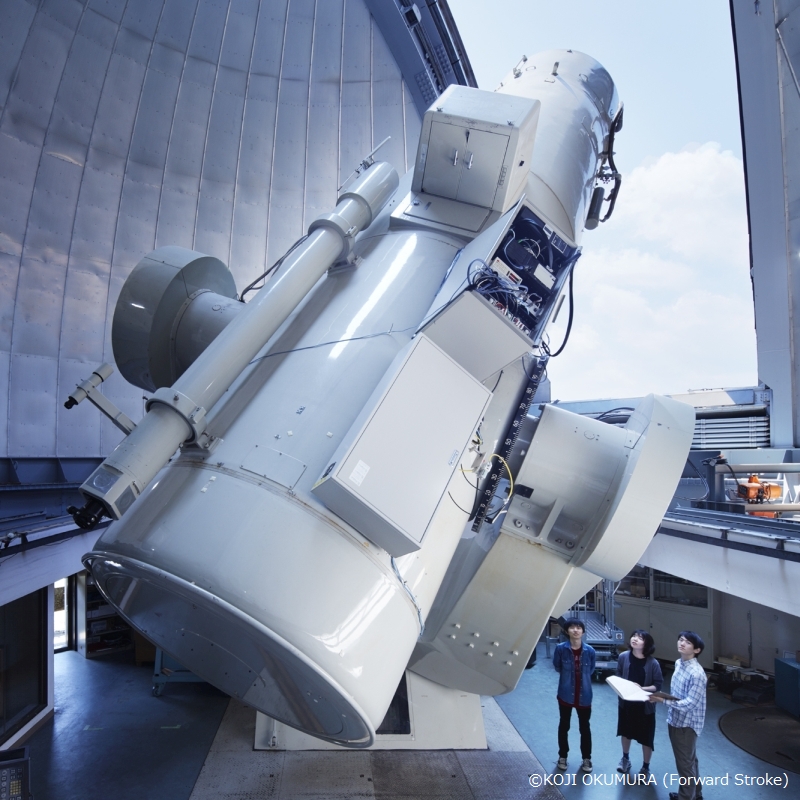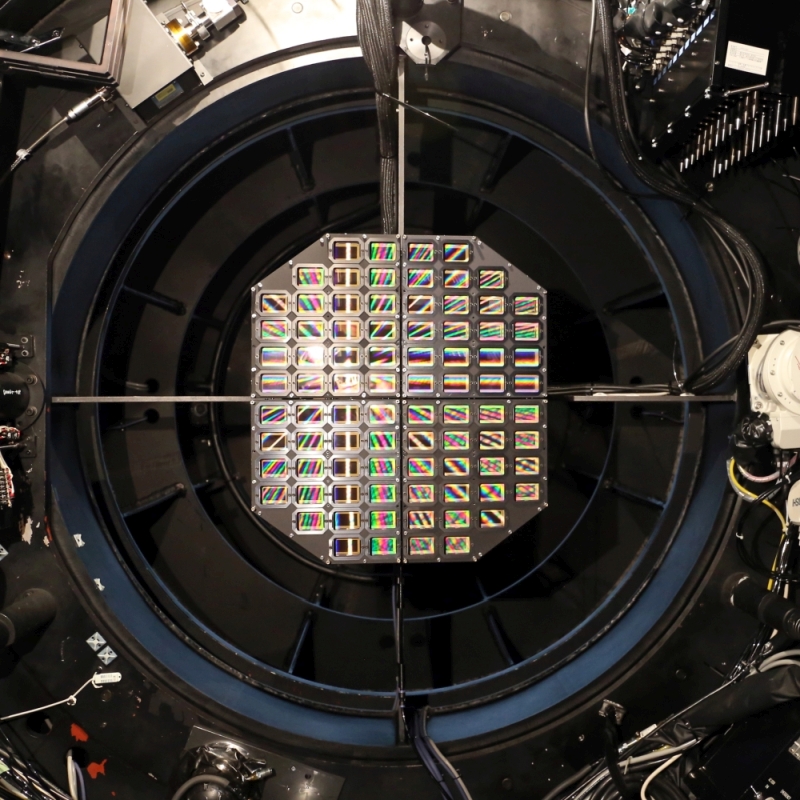FACILITY

Kiso Schmidt telescope
Wide-field telescope (Deff = 1.05 m, f/3.1)

Tomo-e Gozen camera
Wide-field CMOS camera covering 20 deg2 sky.
Optical wide-field video-survey with a mosaic CMOS camera on the Kiso Schmidt telescope, the University of Tokyo
Tomo-e Gozen is an optical wide-field video observation system composed of a mosaic CMOS camera on the 1.05 m Kiso Schmidt telescope, real-time data analysis software, and automated operation software. Consecutive images at 2 fps with a field-of-view of 20 deg2 are obtained with 84 chips of CMOS image sensors. Produced data of 30 TByte/night are processed by advanced data science methods in real time. A high-speed data acquisition capability of CMOS image sensor enables a quick scan of the sky as well as a high-speed monitoring with sub-sec time resolution. Monochromatic all-sky video-survey of 12,000 deg2 and high-cadence video-survey of 3,000 deg2 are now ongoing. When receiving alerts of gravitational wave events, automated follow-up observations of a few 100 deg2 start quickly. The high-speed observation capability with precise timestamps achieved by GPS allows us to carry out simultaneous monitoring of short time-scale variables with X-ray and radio telescopes. The high-speed, high-cadence, and wide-field observations with Tomo-e Gozen will open new windows for astronomy on short time-scale phenomena including faint meteors, near-earth asteroids, stellar occultations, early-phase supernovae, black hole binaries, optical counterparts of gravitational wave sources and FRBs, and unknown flashes in the Universe.

Wide-field telescope (Deff = 1.05 m, f/3.1)

Wide-field CMOS camera covering 20 deg2 sky.
12,000 deg2 sky (elv > 35 deg) in 2.5 hours
Quick follow-ups of gravitational wave and cosmic neutrino events
High-speed observations with X-ray and radio telescopes
Near earth asteroids, faint meteors, artificial satellites, space debris
Early phase supernovae, optical counterparts of gravitational waves, stellar flares, transit of exoplanets, outbursts of comets
Blackhole binaries, dwarf novae, spinning compact objects, stellar occultations by the Kuiper belt objects
Kiso Observatory, Institute of Astronomy, School of Science, the University of Tokyo
10762-30, Mitake, Kiso-machi, Kiso-gun, Nagano 397-0101, Japan
tomoegozen-prjioa.s.u-tokyo.ac.jp
Tomo-e Gozen is operated by Kiso Observatory, Institute of Astronomy, School of Science, the University of Tokyo; Collaborative Research Organization for Space Science and Technology, the University of Tokyo; and the Tomo-e Gozen collaboration. This project is supported by KAKENHI of JSPS, CREST and PRESTO of JST, the Optical and Near-infrared Astronomy Inter-University Cooperation Program, and the grant of Joint Development Research of NAOJ.
